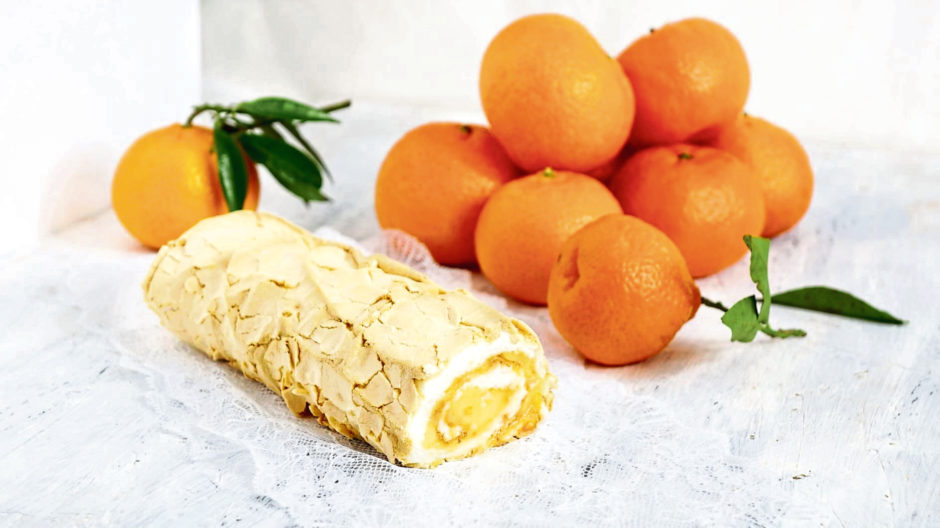Inject some citrus flavours into your spring baking this month as The Great British Bake Off star, James Morton, shares his citrus roulade recipe.
Spring is all about bright, bold and colourful cooking. With some vibrant veggies and fruit coming into season, it’s a season of new beginnings and intense flavours.
Scottish doctor, baker, author and Bake Off star, James, who was the runner-up in the third series of the popular baking show has created this recipe for Graham’s the Family Dairy using the brand’s double cream.
This five-ingredient citrus roulade dessert is perfect for those who are looking to impress their family or household with a show stopping end to a meal.
For more baking and dessert recipes, you’ll find bucket loads of inspiration here.
Citrus roulade
(Serves 4)

Ingredients
- 4 egg whites
- 225g caster sugar
- A jar of lemon curd
- Half a squeezed orange
- 300ml pot of Graham’s double cream
Method
- First, preheat your oven to 200°C/Fan 180°C/400°F/Gas Mark 6. Then, prepare your tin. I do this by lining a large, flat roasting tin with tin foil, then lining it with baking paper. If your bowl is plastic or even slightly dirty, give it a good clean and dry.
- Start by separating your eggs, one at a time. Carefully crack your egg on the side of the bowl, catch the yolk in one side of the shell and let the white drain down into your bowl.
- Pass the yolk to your other shell-half so more white drains down, then keep the yolk in a cup in the fridge for later. Repeat with the other eggs. Make sure no yolk at all remains with the whites (pick it out).
- Use an electric whisk on its highest speed to whip your egg whites until light and fluffy – really very light indeed.
- Once stiff, add your sugar, a teaspoon at a time. This stops you adding it too fast. Once it is all incorporated, whip for a few minutes more.
- Scoop your meringue on to your prepared tin and flatten out with the back of your spoon to fill your tin.
- Once flat, place in the oven and bake for 10 minutes. After this time, lower the temperature to 150°C/Fan 130°C/Gas Mark 2 and bake for a final 20 minutes.
- Once done, lay another sheet of baking paper on a flat surface and turn your meringue upside down on to it to cool.
- While that’s cooling, you can prepare the filling. Pour your cream and orange juice into a bowl and begin to whip it using a hand whisk.
- Keep whipping until it just starts to thicken – just. And no more. Then, add in 3⁄4 of a jar of lemon curd and stir this in.
- After your meringue has cooled for at least 10 minutes, peel away your baking paper and spread your creamy citrusy mixture all over the meringue. Roll it up firmly.
- Transfer to a serving plate, drizzle with your remaining lemon curd and chill until serving.
Recipe by James Morton for Graham’s the Family Dairy.
